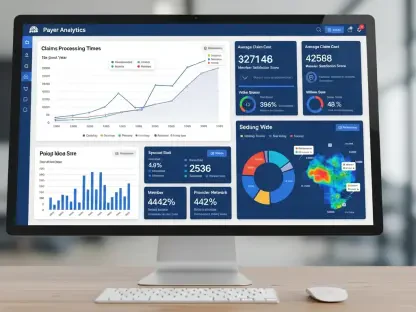Why Sedation-Ready Dentistry Matters For Your Boise Referrals
When anxious patients cancel at the last minute or medically complex cases stall mid-treatment, sedation capability becomes the lever that turns avoidance into adherence, particularly for those with high anxiety, strong gag reflexes, resistance to local anesthesia, special needs, or multi-visit treatment plans that stretch patience and pain tolerance. In this roundup, insights from referring clinicians, practice leaders, and anesthesia-focused teams converged on one point: sedation changes both the clinical arc and the patient’s willingness to finish care.
Experts described a climate of rising dental avoidance and a push to consolidate care into fewer visits, while Boise’s ecosystem has matured with multiple offices that can safely deliver nitrous, oral, and IV sedation. The outcome is a clearer pathway for referrers to place each patient with a practice that matches modality, case complexity, and logistical needs without sending them out of town.
This guide gathers opinions around six selection criteria and contrasts four standout providers. It compares safety protocols, scope of sedation, operational access, and cost pathways—practical dimensions that help align patient risk, procedure demands, and financial reality with the right Boise office.
A Clinician’s Decision Framework For Boise Sedation Referrals
Sedation Depth And Case Complexity—How Modality Drives Treatment Planning
Across interviews, clinicians agreed that modality selection dictates what can be accomplished in a single session and how predictably. Nitrous remains the tool of choice for lighter anxiety and short visits, oral sedation offers deeper relaxation and memory dampening for moderate fear, and IV delivers titratable control for long, invasive, or multi-step cases that need steady depth without overshoot.
Local practice perspectives reinforced that map. Boise Family Dental Care uses oral and IV sedation and is noted for pediatric dosing with Halcion to broaden access for families. Lake Harbor Dental layers nitrous and oral agents—diazepam or midazolam—and reserves IV for surgical cases such as third molars, implants, and reconstructions. Maple Grove Dentistry offers the full range through deep sedation with dental and nurse anesthetists on hand, while Horizon Dental Group emphasizes continuity and flexible scheduling to sustain comfort through an entire plan.
Clinicians also debated consolidation versus staged care. Some advocated compressing multi-appointment work under IV to reduce anxiety relapses; others favored phased oral sedation when medical history or age narrowed margins. Inclusion thresholds for pediatric or medically complex patients varied, but there was broad agreement that stacked oral dosing has limits, and clear triggers—length, invasiveness, prior sedation response—often tip the scale toward IV.
Who Runs The Meds And Monitors? Credentials, Oversight, And Emergency Readiness
Referrers repeatedly emphasized credentials and team drills as nonnegotiable baselines. Sedation permits, robust continuing education, and routine simulations were cited as expected. Horizon Dental Group highlighted ongoing training for Dr. Christian Bennion, a signal of investment in current protocols. Maple Grove Dentistry’s anesthetist-led oversight was frequently praised for depth and redundancy.
Safety infrastructure emerged as a clear differentiator. Boise Family Dental Care explicitly cites continuous vital-sign monitoring and discharge safeguards that include transport requirements after sedation. Lake Harbor Dental described emergency-capable workflows and same-day readiness that keep urgent cases safe and moving. Maple Grove Dentistry’s reliance on anesthetists added another layer of vigilance that reassures referrers handling patients with higher medical risk.
Risk management opinions clustered around airway preparedness, availability of reversal agents, recovery staging, and transport instructions. Contributors viewed these elements as the floor—not the ceiling—for referring medically complex or highly anxious patients. Practices that articulated these standards in pre-visit communications won faster buy-in from both referrers and patients.
Access, Throughput, And Tech—Operational Strengths That Ease Care Under Sedation
Operations matter as much as pharmacology. Stakeholders described how same-day treatment and urgent sedation access at Lake Harbor Dental can halt deterioration from acute pain to broader infection, while Boise Family Dental Care’s multi-procedure blocks minimize total visits for those who lose courage between appointments. Horizon Dental Group’s calming environment and emphasis on family-wide continuity were flagged as subtle but powerful drivers of patient follow-through.
Technology factored into provider selection whenever implants, wisdom teeth, or reconstructions were on the table. Contributors noted that advanced imaging and digital planning at Lake Harbor Dental improve precision under sedation, making longer visits more efficient and reducing the chance of repeat sessions that reignite anxiety.
Market dynamics also came up. Experts observed that practices pairing flexible scheduling with sedation convert backlogged or phobic patients faster. However, there was acknowledgment of a trade-off: deep, longer schedules that serve complex cases well can tighten availability for urgent needs, pushing referrers to match operational style with patient priority.
Paying For Comfort—Insurance, Memberships, And Financing That Keep Doors Open
Cost is not merely a line item—it dictates whether anxious patients show up. Boise Family Dental Care drew notice for broad PPO participation, named insurers, Cherry financing, and an in-house discount plan, Total Care Plus, which together reduce friction for families and multi-phase plans. Horizon Dental Group underscored acceptance of all insurance types and CareCredit, creating a straightforward on-ramp for diverse households.
Maple Grove Dentistry’s in-house membership plan especially helped uninsured patients who delayed care due to cost, while its deep sedation capability added value for those returning after long gaps. Lake Harbor Dental leans on CareCredit and The Lending Club and accepts major cards; insurance participation was not detailed, prompting referrers to confirm coverage during preauthorization.
Strategists agreed that pre-approval workflows and transparent sedation quotes reduce late-stage drop-off. Memberships and financing shrink gaps between clinical need and budget, enabling adherence to comprehensive plans that would otherwise be piecemeal.
Translating Insights Into Referrals—Playbooks And Practical Checklists
The roundup consensus was clear: prioritize a practice’s modality range, team credentials, safety infrastructure, operational access, and financial flexibility, then map those attributes to anxiety level, medical history, and procedure scope. Matching these factors upfront steadies treatment planning and minimizes surprises on the day of sedation.
Actionable steps raised by referrers included:
- Screen and stratify: use an anxiety scale, medical review, airway risk check, and prior anesthetic response.
- Align strengths: send pediatric or deep-sedation needs to Boise Family Dental Care or Maple Grove Dentistry; complex surgeries to Lake Harbor Dental; family continuity and broad insurance acceptance to Horizon Dental Group.
- Confirm logistics: verify monitoring standards, emergency equipment, recovery protocols, transport requirements, and scheduling windows for multi-step plans.
- Close the financial loop: confirm insurance participation, quote financing or membership options, and schedule with cost transparency.
Several contributors recommended a simple referral matrix—case type by modality by payment fit—and a handoff template noting sedation goals, medical flags, and procedural priorities. These tools streamlined coordination and reduced rework.
Raising The Bar For Complex Sedation Care In Boise
What stood out across perspectives was alignment on safety, personalization, and access, with differences in surgical depth, pediatric capability, technology investment, and financing approaches. Boise Family Dental Care excelled on pediatric dosing and explicit monitoring protocols; Lake Harbor Dental on complex surgical capacity, advanced imaging, and urgent access; Horizon Dental Group on family-centered continuity and inclusive insurance acceptance; Maple Grove Dentistry on deep sedation with anesthetist oversight and an empathetic care philosophy.
Contributors also pointed to near-term implications: broader eligibility under tighter monitoring and anesthetist support, plus greater use of digital planning to shorten chair time under sedation. These shifts reduced patient fatigue and improved plan completion rates.
This roundup concluded with a practical charge: apply the six-criterion framework to every referral, pre-brief patients on sedation expectations and costs, and partner with the Boise practice that best fits the case. Doing so created calmer visits, tighter timelines, and more predictable outcomes—benefits that accumulated across entire treatment plans.









